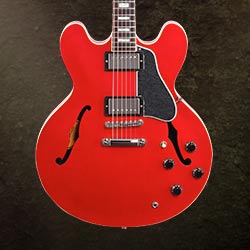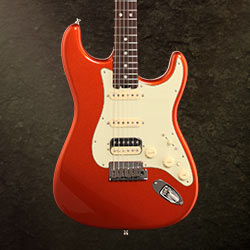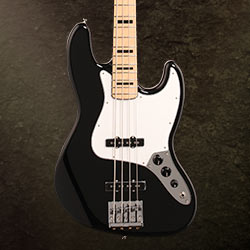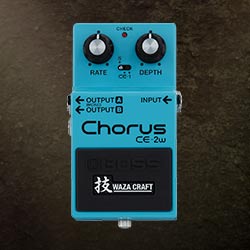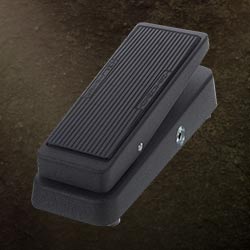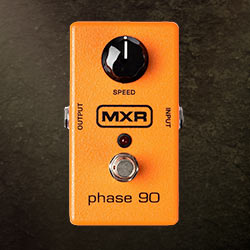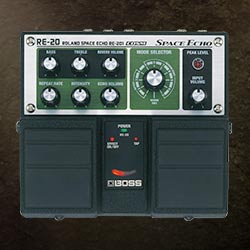Customer Kudos
"Zero percent financing, no credit check plans. Free shipping. Quality product. Win. Win. Win."
March 19, 2024
Legends of Tone: Rush
Discover the tasty tones of the prog rock power trio.
Combining equal helpings of progressive rock opulence and hard rock's raw power, Rush has established themselves as a band that sounds like no other. Featuring the chorused riffs and virtuosic leads of Alex Lifeson, the grinding yet melodic bass lines and howling voice of Geddy Lee, and the explosive technical prowess of Neil Peart on drums, the band's powerhouse musicianship has always set them apart from other rock bands. Hailing from the Great White North, Rush has been blowing minds with complex song structures, off-the wall rhythmic timing, and a bombastic sound for over 40 years.
For this edition of Legends of Tone, we're taking a closer look at Rush's signature sound to fill you in on how to nail the tone yourself -- without dropping a significant chunk of change on all the vintage gear the band has accumulated throughout the decades. Crank the volume and immerse yourself in the intoxicating sounds of Rush. Want to know how we got the sounds in this video? Take a deep dive into the tones and techniques of Rush on the zZounds Blog!
Check out our top 5 Rush guitar solos in this Legends of Tone video:
Explore more legendary artists' tones in our Legends of Tone series »
For this edition of Legends of Tone, we're taking a closer look at Rush's signature sound to fill you in on how to nail the tone yourself -- without dropping a significant chunk of change on all the vintage gear the band has accumulated throughout the decades. Crank the volume and immerse yourself in the intoxicating sounds of Rush. Want to know how we got the sounds in this video? Take a deep dive into the tones and techniques of Rush on the zZounds Blog!
Gibson ES-335
Prominently played throughout the band's early days, hollowbody Gibson electrics were Alex Lifeson's original go-to axes. ES-335 and ES-355 semi-hollowbodies created tones that went well with Rush's brand of rock 'n' roll. Listen to almost any early Rush album, and you'll be hearing the dark, robust sound only a semi-hollow guitar can deliver.
To capture this sound, we went with a 2016 ES-335 -- the flagship of the ES line. Despite the large diameter of the body, it's only a few inches deep to keep comfort at a maximum. A pair of PAF-style Burstbucker 1 and 2 pickups deliver the balanced output and bright tone that made them famous. Plug an ES-335 into any amp, and you'll hear the Alex Lifeson tone almost immediately.
To capture this sound, we went with a 2016 ES-335 -- the flagship of the ES line. Despite the large diameter of the body, it's only a few inches deep to keep comfort at a maximum. A pair of PAF-style Burstbucker 1 and 2 pickups deliver the balanced output and bright tone that made them famous. Plug an ES-335 into any amp, and you'll hear the Alex Lifeson tone almost immediately.
Fender American Elite Stratocaster HSS
By 1980, Lifeson began using Fender Stratocasters on a much more regular basis, culminating in their almost exclusive use on the album Moving Pictures. Loaded with humbuckers in the bridge position, these guitars had a much more present tone than he got with his Gibsons. When paired with effects like choruses and flangers, the tone became distinctly Lifeson's.
We used a Fender American Elite Stratocaster HSS to replicate the clarity of Lifeson's tone during this era. Equipped with a Fender ShawBucker in the bridge position, this guitar easily produces the smooth, richly overdriven tones Lifeson created in the '80s. A push-push button engages the "passing lane," engaging only the bridge pickup and bypassing the tone controls right to the output jack for the rawest tone.
We used a Fender American Elite Stratocaster HSS to replicate the clarity of Lifeson's tone during this era. Equipped with a Fender ShawBucker in the bridge position, this guitar easily produces the smooth, richly overdriven tones Lifeson created in the '80s. A push-push button engages the "passing lane," engaging only the bridge pickup and bypassing the tone controls right to the output jack for the rawest tone.
Fender Geddy Lee Jazz Bass
Known for his signature trebly, grinding tone, Geddy Lee has been known to play a number of basses, yet he seems to always come back to his trusty '72 Fender Jazz Bass. Used on the song "Tom Sawyer," Geddy's J Bass punches through the band with a cutting attack -- perfect for adding clarity to busy bass lines.
The Fender Geddy Lee signature Jazz Bass is a faithful replica of Geddy's so-called "#1" bass. Loaded a pair of punchy Jazz Bass pickups and equipped with a Leo Quan Badass II bridge, this bass is ready for its spot in the limelight.
The Fender Geddy Lee signature Jazz Bass is a faithful replica of Geddy's so-called "#1" bass. Loaded a pair of punchy Jazz Bass pickups and equipped with a Leo Quan Badass II bridge, this bass is ready for its spot in the limelight.
Marshall 1987XL Plexi

Preferred throughout the early part of Alex Lifeson's career, the Marshall Plexi was a staple backline throughout this early period. While he moved on to other Marshall amps, as well as many other brands and models, the Plexi perfectly captures the raw tone of early Rush.
The 1987XL reissue we used is a spectacular replica of the classic Plexi tone. Complete with four inputs and plexiglass panels used in the originals, this Marshall is built for balls-out rock 'n' roll.
The 1987XL reissue we used is a spectacular replica of the classic Plexi tone. Complete with four inputs and plexiglass panels used in the originals, this Marshall is built for balls-out rock 'n' roll.
Fender '68 Custom Vibrolux

Another amp commonly found in Alex Lifeson's backline, the Fender Super Reverb was the perfect vehicle for producing the thick, full cleans he loves to use. The Super Reverb's four 10-inch speakers kept the response nice and tight, perfect for producing a percussive attack with a muscular sustain. It should also go without saying that the reverb on those amps gave Lifeson the lively space needed to fill out a three-piece band.
In our attempt to capture the response and tone that only 10-inch speakers can deliver, we employed a Fender '68 Custom Vibrolux Reverb. With a pair of aggressive 6L6 power tubes and its 2x10" speaker setup, we were able to get a robust clean tone that had plenty of attack, complete with that famous Fender reverb.
In our attempt to capture the response and tone that only 10-inch speakers can deliver, we employed a Fender '68 Custom Vibrolux Reverb. With a pair of aggressive 6L6 power tubes and its 2x10" speaker setup, we were able to get a robust clean tone that had plenty of attack, complete with that famous Fender reverb.
Boss CE-2W Chorus Waza Craft
Aside from ripping riffs and searing leads, Alex Lifeson is also well-known for his enthusiastic use of many different effects. One of the staples of his tone is modulation. The lush sound of a Boss CE-1 chorus pedal made Lifeson's guitar sound just a bit bigger -- a boon for any three-piece band.
To capture that watery tone, we used a Boss CE-2W Waza Craft Chorus. This fantastic little pedal not only features a CE-2 circuit, but you can switch it over to the original CE-1 circuit for those over-the-top waves of warble.
To capture that watery tone, we used a Boss CE-2W Waza Craft Chorus. This fantastic little pedal not only features a CE-2 circuit, but you can switch it over to the original CE-1 circuit for those over-the-top waves of warble.
Dunlop GCB95 Original Crybaby
If you were the guitarist in a rock band during the '70s, having a wah in your arsenal was almost par for the course. Whether using it to create movement during lead flourishes, or half-cocked for a nasally rhythm tone, you just had to have one.
Lifeson has used a wah-wah throughout his career, peppered into solos here and there, like on "By-Tor and the Snow Dog" and "The Spirit of Radio." To nail the wah tone, we chose the classic Dunlop Original Crybaby. As the archetypical wah sound, it's hard to go wrong with this pedal.
Lifeson has used a wah-wah throughout his career, peppered into solos here and there, like on "By-Tor and the Snow Dog" and "The Spirit of Radio." To nail the wah tone, we chose the classic Dunlop Original Crybaby. As the archetypical wah sound, it's hard to go wrong with this pedal.
Electro-Harmonix Stereo Electric Mistress
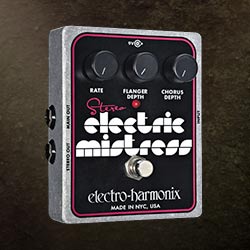
A slightly different flavor than chorus, a good flanger pedal delivers sweeping whooshes that can really make your head spin. Best heard in the intro of "The Spirit of Radio," the flanger effect adds some weight to the lick, similarly doing so throughout a few of the verses as well.
The effect Lifeson used on the record was an Electro-Harmonix Electric Mistress, and to nail that tone, we used the modern version of the same EHX pedal. The Stereo Electric Mistress delivers that alluring flanger tone with the option of splitting the signal to two amps for extra versatility.
The effect Lifeson used on the record was an Electro-Harmonix Electric Mistress, and to nail that tone, we used the modern version of the same EHX pedal. The Stereo Electric Mistress delivers that alluring flanger tone with the option of splitting the signal to two amps for extra versatility.
MXR Phase 90
Adding even more modulation into the mix, Lifeson used phasers throughout many songs in Rush's early era. Using his trusty Maestro Phase Shifter, Lifeson made leads and chords come alive with the lush, swirling effect.
While we don't have any vintage Maestro Phase Shifters in stock, we found that the classic MXR Phase 90 easily gets the job done. This reliable effects unit features only one knob, making it easy to dial in just the right rate of oscillation.
While we don't have any vintage Maestro Phase Shifters in stock, we found that the classic MXR Phase 90 easily gets the job done. This reliable effects unit features only one knob, making it easy to dial in just the right rate of oscillation.
Boss RE-20 Space Echo
Perfect for filling out expansive lead licks and solos, echo has played a big part in Alex Lifeson's overall sound. Originally using the Maestro Echoplex on earlier recordings, Lifeson had switched over to the Roland Space Echo by the time Hemispheres came out.
In order to accurately capture that classic tape echo sound, we went straight to the source with a Boss RE-202 Space Echo. This dual Boss pedal perfectly mimics the analog tone of the original without the hassle of tape, while adding useful features like tap tempo.
In order to accurately capture that classic tape echo sound, we went straight to the source with a Boss RE-202 Space Echo. This dual Boss pedal perfectly mimics the analog tone of the original without the hassle of tape, while adding useful features like tap tempo.

